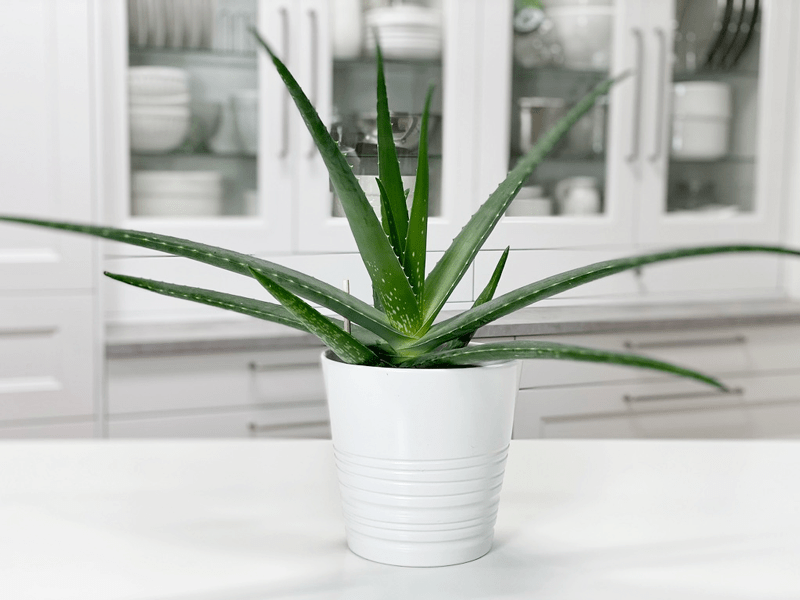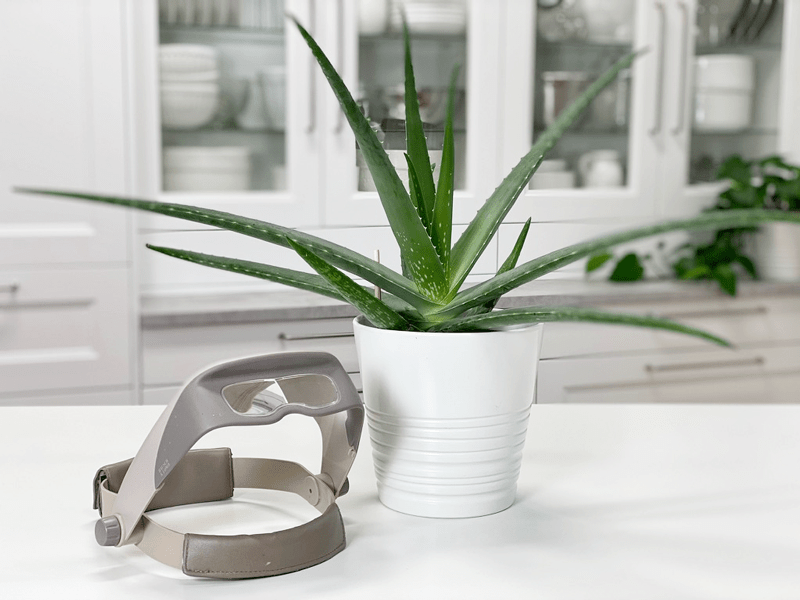

 Add to favorites
Add to favorites
I don’t recall my mom being a huge indoor plant lover while I was growing up, but I know we had a few tucked here and there. However, I do recall when I was in third grade; I came across the mother lode of aloe vera plants. Next door to the apartment building we lived in was a little white house. An elderly lady lived there alone. During the summertime, she would have an ongoing garage sale that drew me in daily. I didn’t have a need for anything–a nine-year-old doesn’t have a calling for doilies and old bathroom rug sets–but there was one item that I fell in love with.

Aloe vera plants! She must have had 50 small starter plants that she was selling for 25 cents each. I didn’t know a thing about them or why a person would want one of those alien-looking plants, but the price was right, and Mom needed a surprise! So, I bought a couple of them for her. She received them with motherly excitement, which made me want to buy her more of them!
So, every day that summer, I would dig in the deep corners of her purse for any change that she might have had. Soon, Mom ran out of coins, unbeknownst to her, so I reverted to looking in her old purses in the closet, I turned up couch cushions, I scoured the floor in the community laundry room… pennies, nickels, dimes… I didn’t care what form it came in; it all added up. I have no idea how many plants I bought that summer for my mom, but I should have been awarded “the frequent shopper” award for sure.
 A little over a decade later, I brought home MY first aloe plant. It was a thing of beauty, and I was so excited to try my hand at growing indoor houseplants. The next day, I woke up to something that used to resemble an aloe plant… my cat ate almost the whole thing!
A little over a decade later, I brought home MY first aloe plant. It was a thing of beauty, and I was so excited to try my hand at growing indoor houseplants. The next day, I woke up to something that used to resemble an aloe plant… my cat ate almost the whole thing!
Skip a few decades, and here I am again, attempting to grow yet another aloe plant (no cats this time). I bought it with dreams of creating raw, vegan recipes with it, but in reality, I can’t bring myself to cut the darn plant. So, here it sits, growing and looking ever so enchanting.
There are over 400 different species of aloes across the world. They have many medicinal and commercial uses. In fact, it is one of the most useful plants in the whole world. Aloe vera has at least six natural antiseptics and about a hundred more uses. Its antiseptic characteristics are known to be effective in destroying mold and bacteria.
One of the most popular uses of this plant comes from its leaf juice. The juice can miraculously relieve pain caused by scrapes and burns. This plant not only holds amazing appeal to people but also to animals. Interestingly enough, hummingbirds love the nectar from aloe flowers.
It’s important not to overwater them–like any plant, really. In the warmer months, you can soak the plant with water. Just make sure you allow the soil to dry out almost completely before watering it again. In the colder months, the plant will require less watering because it will take longer for the soil to dry. I water mine roughly 1-2 times a month in the summer, less in the winter. Remember, those fleshy leaves and roots are full of water, and they can quickly rot out.
Indoors, they require as much light as possible. If the plant is not getting the light it needs, the leaves will droop downward. Just be sure to keep it away from hot glass (like a western exposure) because it will burn. It can be near that window but not in it. It’s a good idea to rotate the plant with each watering to ensure that all sides of the plant receive an equal amount of sunlight. My aloe plant has been living on the counter in front of a west-facing window. It’s the best place I have for it at the moment, and so far it seems happy. It’s been growing like crazy… though I have a feeling it does need some more light. I will work on that.
Aloe vera plants do best in temperatures between 55 and 80 degrees (F).
Like most succulents, they don’t really require much in the line of fertilizer. When I got mine, I top-dressed it with a 1″ layer of worm castings and left it at that.
Diagnosing what is going wrong with your plant is going to take a little detective work, but even more patience! First of all, don’t panic and don’t throw out a plant prematurely. Take a few deep breaths and work down the list of possible issues. Below, I am going to share some typical symptoms that can arise. When I start to spot troubling signs on a plant, I take the plant into a room with good lighting, pull out my magnifiers, and begin by thoroughly inspecting the plant.

The leaves on my plant are growing horizontally.
The leaves are starting to turn brown.
The leaves are thin and curling.
If you want to have healthy houseplants, you MUST inspect them regularly. Every time I water a plant, I give it a quick look-over. Bugs/insects feeding on your plants reduces the plant sap and redirects nutrients from leaves. Some chew on the leaves, leaving holes in the leaves. Also watch for wilting or yellowing, distorted, or speckled leaves. They can quickly get out of hand and spread to your other plants.
IF you see ONE bug, trust me, there are more. So, take action right away. Some are brave enough to show their “faces” by hanging out on stems in plain sight. Others tend to hide out in the darnedest of places, like the crotch of a plant or in a leaf that has yet to unfurl.
I have an alow plant that is fat with many babys poking out can I just remove them and plant ? will they grow?
Good evening Claudia,
You can transplant baby aloe vera plants. They are referred to as”pups.” You will need to wait until they have developed a small root system, usually when they are a few inches tall and have a couple of leaves; this is the best way to propagate new aloe vera plants from an existing one. blessings, amie sue
So ongoing problem with my aloe plants getting tall bare-stemmed stalks. They are next to a window so I hope they are getting enough light. I take the bottom leaves off to use and this results in a tall stalk which then starts to fall over even if I put stakes in it. I don’t want to put it in a bigger pot as I live in an apartment. The roots are at the bottom of the stalk so how to shorten it without killing it by removing the roots? TYIA.
Hello Patricia,
I wouldn’t repot it either if the roots are not root bound. Too large of a pot can be as damaging as too small of one. You mentioned that the roots are at the bottom of the stalk. Are the roots coming above the soil? If so, it may need to up-potted. I would gently remove it from the pot and look at the roots below to know for sure.
Are you telling me that the plant isn’t pushing out any new growth? Once a stalk is cut or damaged, the existing section will not regenerate new growth on that specific stalk.
If you feel ok doing so, you could email me a picture of the plant so I can better understand what might be going on. My email address is [email protected]
blessings, amie sue